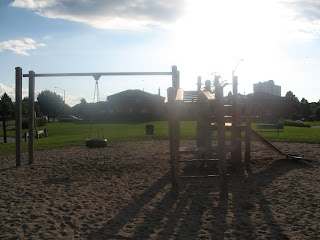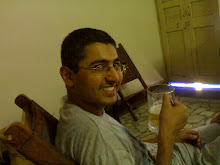The Vanishing Money
The crisis, as everyone from Delhi to Dallas, tells you is one of liquidity and confidence. Or well a lack of them. In very crude layman terms, its about people borrowing huge sums of money and being not able to repay them. In a bid to stave off their hungry lenders, as they run around to borrow more, they are summarily dismissed by other lenders who now have no confidence in their ability to generate earnings from the money sought. I would add one more word to the description in the line above. In effect, this is a crisis of credibility. Credibility of banks, brokers, traders, speculators, merchant bankers and their ilk. And this sadly is a strong indictment on those running these institutions. Those ‘quality minds’ who exit the hallowed lawns of the brightest B-schools and then enter the bull ring of our financial markets. The knife twists further into the flesh when one realizes that the Balance Sheets that went broke were of those for which the ‘best and the brightest’ from these schools chose to work for. (TT Ram Mohan has provided an insight into how the hollowness of the so called intellect of these firms and the people who inhabit them in the Economic times a couple of days ago)
Not that there haven’t been crises in the economies before. But this one has a marked difference on two principal counts. Earlier crises have been closely driven by the real economy; the brick and mortar or the tangible elements – due to sectors, companies & currencies with weak fundamentals which you could see and their inability to drive promised earnings leading to a crash of over invested money put in them. ‘Fundamentals’ is a much used word in all that we read today. Simply put, it effectively means that if you take a housing loan of Rs 60 lacs and if you possess a full time job paying you even Rs 6-7 lacs minimum in a year, your fundamentals are strong at the time of borrowing; simply because you possess the means to repay the money, albeit slowly. The current crisis though is that of the unseen or more so that of the un-understood and difficult to comprehend instruments. Even those well versed with the financial markets are finding it hard to pin point where the trouble lies in the opaque Balance Sheets of the collapsing institutions. And the final defaulting debt lying on such Balance Sheets is distanced from the real economy (in this case the house sold on the mortgage) by a significant web of complex, inter woven and hard to unravel securitized assets.
The second major difference is that of risk appetite and its assessment. Economies pass through routine cycles of booms and recessions on account of heavy investments driven by a hunger to risk big for bigger returns. What is unraveling now is a risk appetite among major investment banks and other institutions that had gone beyond the roof. Continuing with our previous example, it’s a bit like you possessing an uncertain job (or no job) and your bank stilling willing to lend those 60 lacs to you. In what economists call the ‘rational human mind’, such business with no assurance of repayment and no collateral (another asset that will cover your risk of default) or bad collaterals will simply be labeled with one word – preposterous. And yes, this is pretty much the kind of thing that was going on in the US. The ‘best of the best’ rode this bandwagon and put more money in the hands of those who did not have the means to repay it, in the hope that if the borrower defaulted the underlying house for which the loan was given would be sold at a premium and money would be recovered.
But of course, you can realize premium on the sale of one house but not when all the houses are out for sale because everyone lent money in the same reckless way as you did. The prices crash (supply exceeds demand) and you simply have nothing to cover your backside. This kind of dealing is not an illegal act but bad and greedy investment. And bad investments, as we all know, yield no returns.
Some major home truths have emerged from this crisis which should guide the response of those in the thick of the action now. First, no matter how free and competitive a market may be, you still need a strong statutory/ government regulator to bail out collapsing institutions that can have a domino effect and derail a lot more than just their immediate neighborhood. Second, bad assets WILL NOT create good earnings no matter how much ‘smart analyses’ may justify it. Third, no corporation is above board or unsinkable. The moment the fountain of money runs dry even the largest giant will find it difficult to stand tall. And fourth, its time for all the regulators to pull up their socks. One cannot prevent an investment from taking place in a bad market but tighter solvency norms and higher provisioning requirements (effectively asking institutions to park enough money for the ‘rainy days’) need to be looked at anew to barricade future such spectacular implosions.
And all the players need to ask some serious questions. The ‘smart guys’ in the banks need to reflect how such bad investments were allowed a free run. The regulators need to question their norms and whether corporate governance fulfilled its role in preventing such a rush towards manic opportunities that have resulted in a zero gum game. The auditors need to ask themselves how they missed seeing that the assets reflecting against the loans taken were nothing but pieces of papers. And investors like you and me can do well to pay attention to the dissenters like Nassim Nicholas Taleb who argue that all those experts hypothesing over the market movements daily on our televisions, perhaps simply don’t know what they are talking about.










